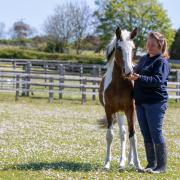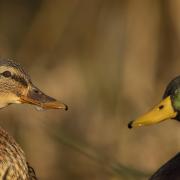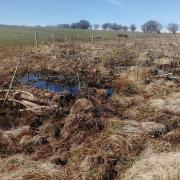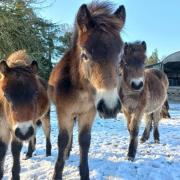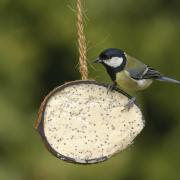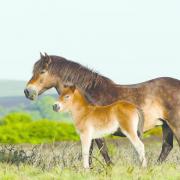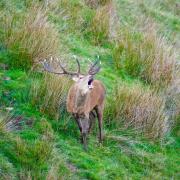If you go down to the woods today, you're sure of a big surprise. No, not teddy bears, but the rare Bechstein's bat species. The Somerset Bat Group elaborates
On a muggy, starless night, in the midst of the ancient wood a trap has been set. Looking for all the world like a giant, square–shaped harp on legs, the trap, constructed from strong steel and light aluminium, employs a mesh made from fine fishing line. Its intended catch is lured using sounds pitched above the level of normal human hearing. What is the purpose of such an elaborate device? Somerset Life goes down to the woods to investigate……
“The harp trap is a good way to catch a variety of woodland bats with the minimum risk of harming them”, explains Paul Kennedy, a licensed bat worker who is supervising tonight’s catch. “Bats fly into the strings of the ‘harp’ and are directed downwards into a large canvas pouch with pockets into which they can crawl and from which they can be extracted.”
Paul and fellow volunteers from the Somerset Bat Group are using harp traps to survey over fifty woods in the county for bats. The project is being coordinated across the southern counties of England by the Bat Conservation Trust, the national charity devoted to the conservation of bats.
The project’s focus is a particularly elusive species – Bechstein’s bat – thought to be among the rarest of all 17 bat species resident in the UK. “They live only in ancient woods, and not in every wood by any means”, Paul Kennedy continues. “There may be only a few dozen Bechstein’s bats in a wood that could be 25 hectares or more in area. They are very elusive creatures, so the possibility of catching a one by chance is pretty slim. This is where the Sussex Autobat comes into its own” Paul says, pointing to a metal box sat beneath the harp trap. A tiny red light on the box’s side indicates it is switched on, yet to our ears it is silent.
Inside the Autobat’s casing are sophisticated electronics developed at the University of Sussex that mimic bat social calls and broadcast them. The sounds are pitched in the ultrasonic frequency ranges that bats use to communicate with one another. Humans cannot hear the sounds emitted by the Autobat, but bats do.
“Bats are curious by nature”, says Tony Serjeant, the co-coordinator with Paul of the Bechstein’s Bat Project in Somerset. “All sorts of bats investigate the sounds made by the Autobat, but by playing Bechstein-like calls, we maximise our chances of attracting this species and catching them.”
Does it work? Tony reports that “In a matter of only a few weeks we have discovered probable breeding colonies of Bechstein’s bats at three new sites in Somerset. It looks like Somerset might be a ‘hot-spot’ for this species.”
Helen Miller from the Bat Conservation Trust believes that the survey information that local Bat Groups are collecting will be invaluable in developing a strategy to conserve the Bechstein’s bat. “If we can identify parts of the country that are ‘hotspots’ for our rarest native bat we can work with woodland owners in those areas to try to ensure that breeding colonies thrive.”
Bechstein’s FactsA fully-grown Bechstein’s bat weighs about 10 grams or approximately the same as a pound coin.Like all British bats, Bechstein’s bats hunt at night using echolocation to find their prey in the dark. Bechstein’s bats have large ears compared to most UK bats and are thought to be able to home in on the tiniest of noises, such as the rustling of a moth’s wing.Adults are slow but very skilful flyers. They catch moths and flies mainly on the wing but can also pick these insects as well as earwigs, harvestmen & spiders off the surface of leaves.The oldest known Bechstein’s bat lived to be 21 years of age.Old woodpecker holes in trees make the ideal site for a nursery colony of up to 30 females plus young. The males keep to themselves most of the year but in Autumn they may visit special ‘swarming sites’ to try to find mates.Bechstein’s bats hibernate in caves and cellars.Prehistoric remains suggest Bechstein’s bat used to be one of this country’s commonest bats, yet the latest estimate of the total UK population was only 1500. The reason for the catastrophic decline is thought to be the fragmentation and loss of woodlands.What you can doLearn more about the fascinating world of bats from the Bat Conservation Trust ( www.bats.org.uk)Visit the Bechstein’s bat project web pages for more information about the project ( www.bats.org.uk/bechsteinsproject)Join your local Bat Group (Contact details for Somerset Bat Group are on the Bat Conservation Trust website) If you own or manage a wood, find out what you can do to support woodland bats (There is information on the Forestry Commission website – www.forestry.gov.uk – Look for the leaflet ‘Woodland management for bats’).





